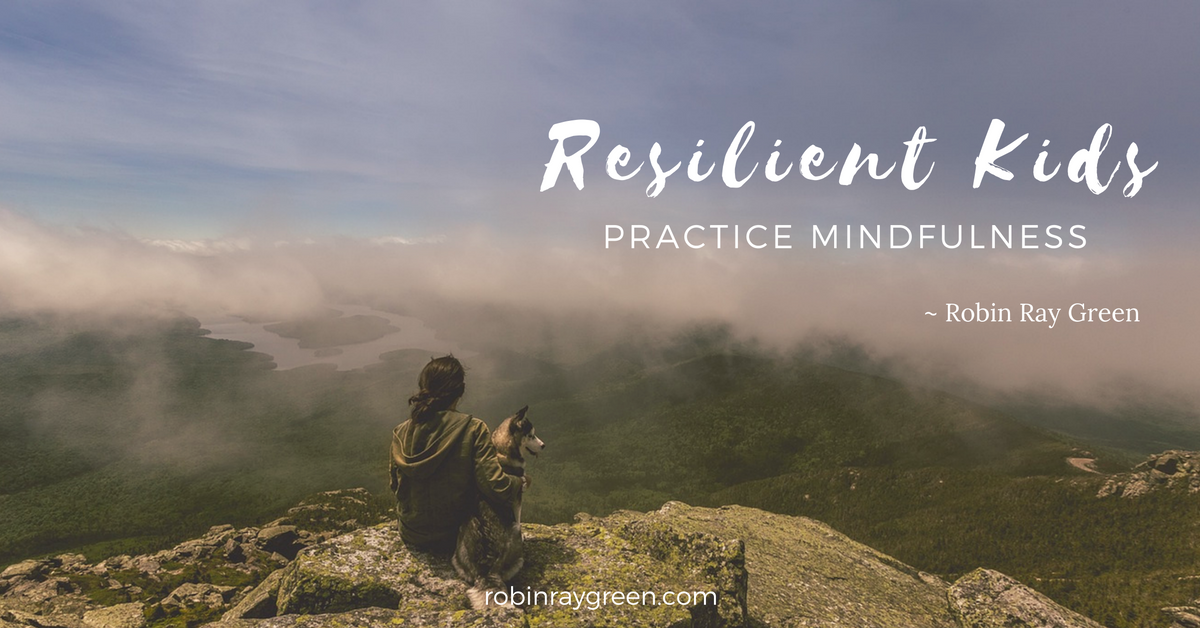Mindfulness & Gratitude
Every parent wants their child to grow up and be healthy and happy. How can we ensure our children find inner happiness? How can we cultivate practices that will help our children become resilient to stress?
Happy Kids Practice Gratitude
Gratitude teaches us that regardless of our external circumstances or challenges, we have things in our lives that are of value right now. It teaches us to be happy no matter what. As much as we all want to prevent our children from suffering, the reality is that life is not fair.
We won’t always get what we want. Someone else will always have more than we do, and someone else will always have less. Much of our suffering comes from the judgments we make about what we do or don’t have.
Developing our gratitude muscle helps avert this type of suffering because we can find the positive in our lives right now. We can have gratitude for all the simple pleasures in life and see that every moment we have is a gift.
All we have is the present moment, but when we’re distracted by thoughts of the past or wants for the future, we miss out on the beauty that is in front of us right now. Gratitude can ground us in the present and help us see all the many blessings we have.

The best way to teach gratitude is to model it for our children and express our gratitude for the blessings in our lives.
It can be for the amazing things that happen to us, or it can be for the simple pleasures of being alive. We can express gratitude for a summer breeze, a beautiful sunset, or the crickets chirping. We can express gratitude for our food and water, perhaps by saying a simple blessing.
I recommend fostering the habit of gratitude by adopting one or more of these simple practices recommended by gratitude researcher and author Christine Carter, Ph.D.:
- At dinner go around the table and have everyone share something for which they’re grateful.
- Ask your child to tell you about “three good things” that happened that day (bedtime is a great time for this).
- Create a “gratitude box.” Have your child write down something she is grateful for on a slip of paper and put it in the box every day. Read all the “gratitude fortunes” once a week.
Gratitude doesn’t have to be a formal practice; it can be simply a way of being in the world.
Passing on this quality to your children will help them live a full and blessed life in which they can enjoy the journey and all the stops along the way. All parents want their children to be happy and healthy, and developing a daily habit of gratitude is a surefire way to see that they are.
Mindfulness

In school, we teach kids to use their logical minds to think, learn, and problem solve. But there’s one equally important thing we should be teaching them: how to stop thinking, to quiet their minds, and to just be.
Meditation and mindfulness have been around for centuries and are an important aspect of TCM and Eastern philosophies.
Mindfulness teaches us to be present in the moment and experience what is happening right now. It helps us become aware of our thoughts and emotions in a nonjudgmental way. Mindfulness can actually reduce anxiety and calm the key area of the brain associated with our stress response, the amygdala, and there’s plenty of compelling science to back up its stress-reducing effects.
As life unfolds at a faster and faster pace, it’s important for children to have a way to slow down and be in the moment.
Help your children cultivate mindfulness by having them check in with their senses. Ask them: What do you hear right now? What do you smell? What do you feel—a cool breeze or warmth? Take a walk with them and just observe nature. Have them look at the sky, listen to the birds, and feel the air on their skin.
Doing this can help them feel more grounded. They’ll know they are present in the moment when the voice inside their head stops spinning stories about what they are seeing and instead becomes quiet. As children get older, they often lose this innate ability of being present in the moment, so mindfulness practices can help them keep it.
Teaching your child to meditate is one of the greatest gifts you can give.
There are many benefits and compelling science, including MRI brain scans, attesting to the value of this ancient technique. It can help boost the immune system, reduce stress and anxiety, and lower blood pressure. It’s helpful for numerous health issues, from digestive problems to skin conditions like psoriasis.
But what’s really astounding is that meditation can physically change your brain!
The more you meditate, the more you increase the gray matter in key areas of the brain related to self-awareness and compassion. Meditation actually helps your brain to become more compassionate and less stressed, even if your external circumstances have not changed a bit!
Experts agree that mindfulness and meditation should be taught to children in school as a way to build emotional intelligence, compassion, and empathy. It can also help children improve their focus and attention, which are the basis for a healthy classroom environment.
Learn more about Mindfulness and Gratitude
Teaching Children to Meditate: Simple Steps for Getting Started
My Boys Meditating Before School
Kids are naturally mindful. Have you ever noticed how completely present they are during play, enjoyable tasks or anything that holds their interest? Most kids are mindful until about age 9 or 10 when their bodies and brains begin to change in preparation for puberty. If you can show them how to continue being mindful and how to meditate at an early age it is a wonderful gift you can give them that will help them their whole life.


